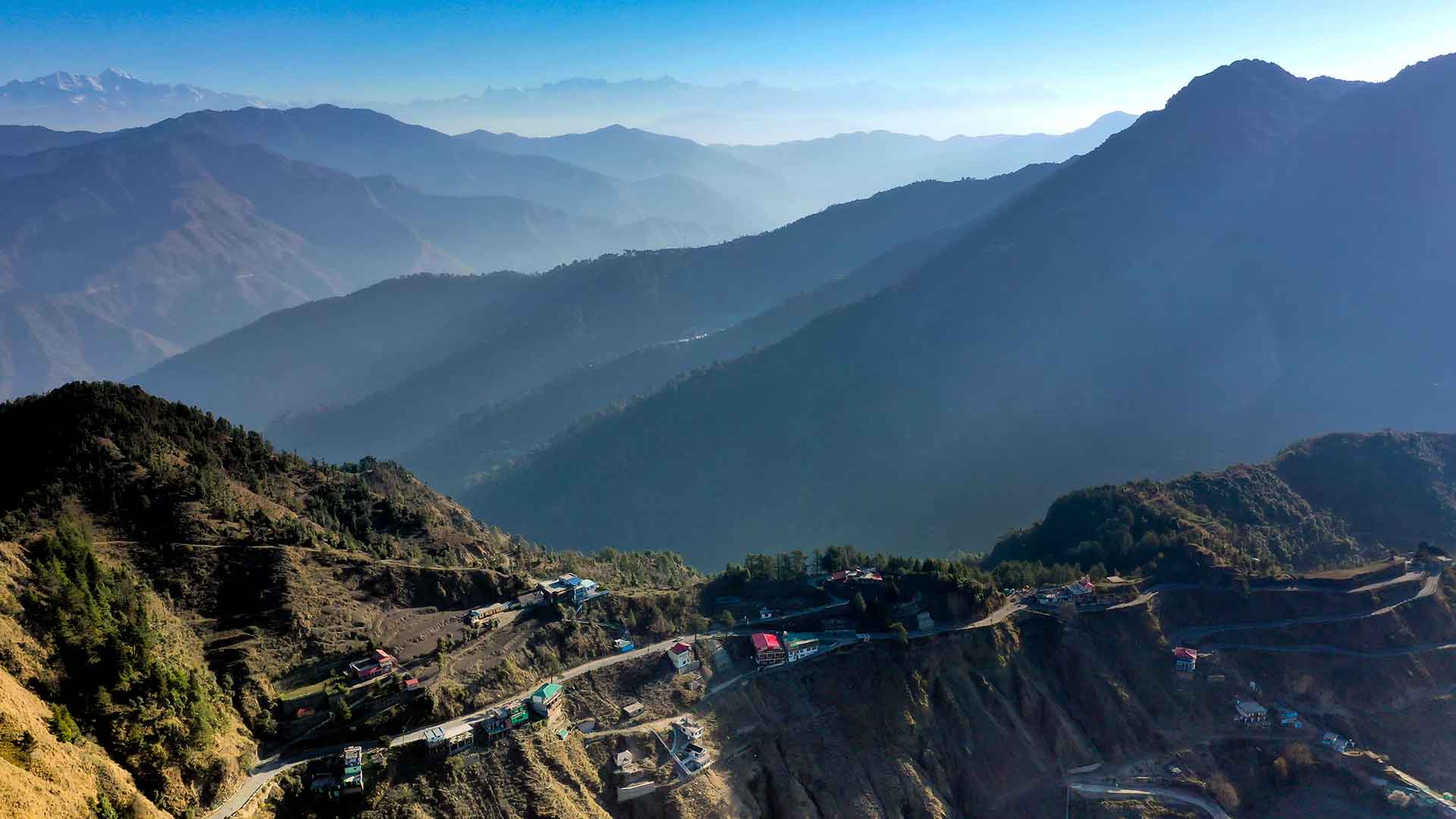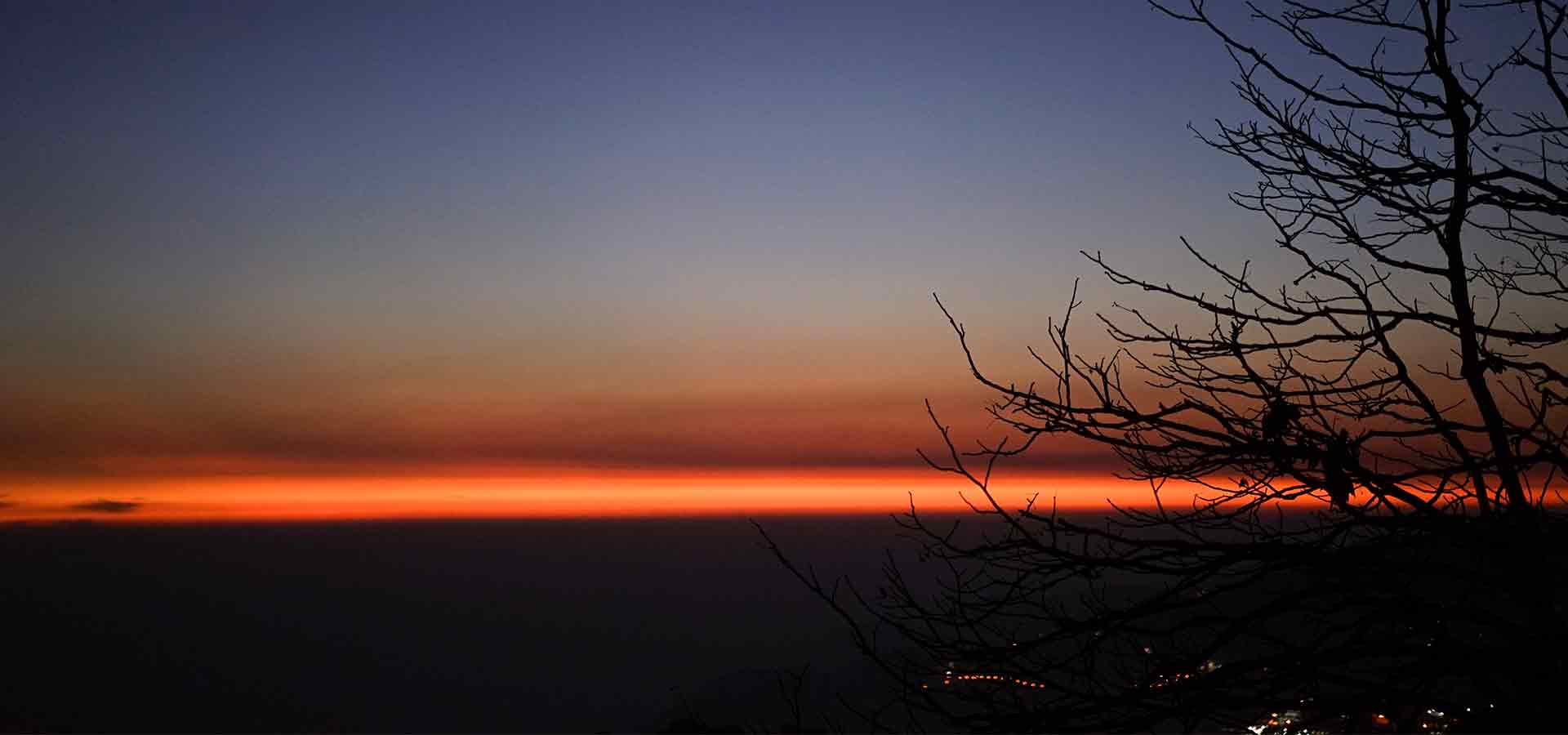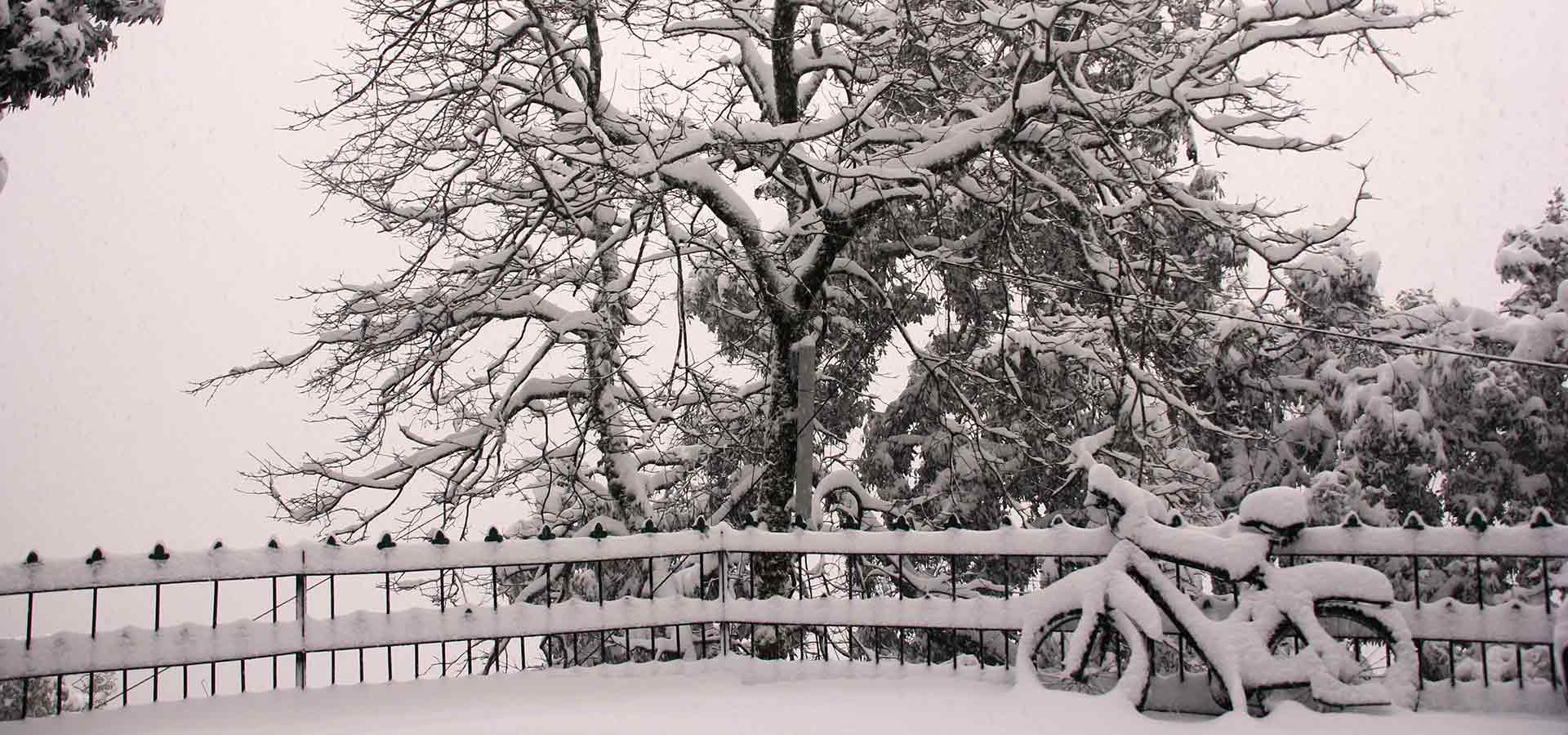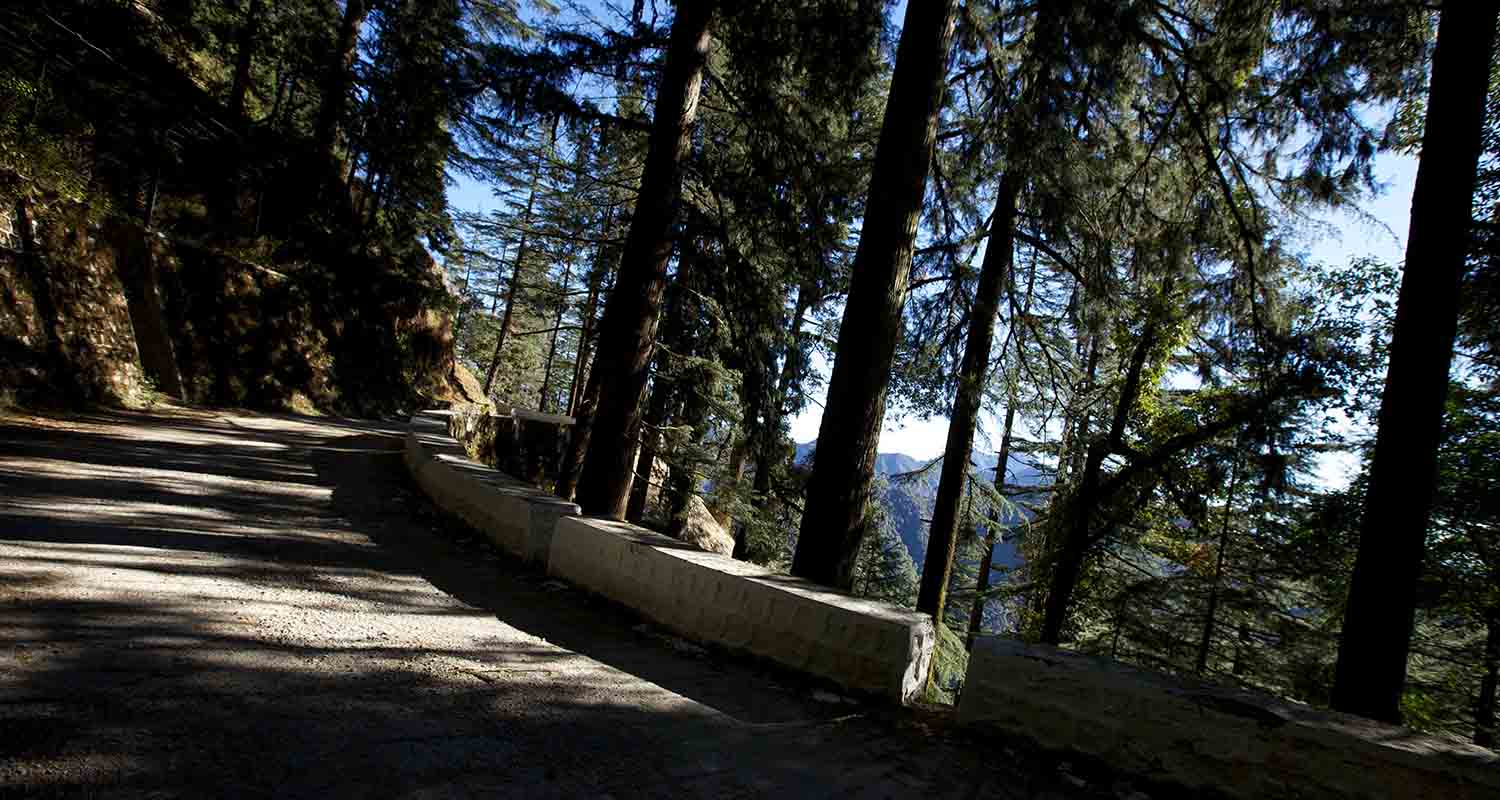Scenic Drives
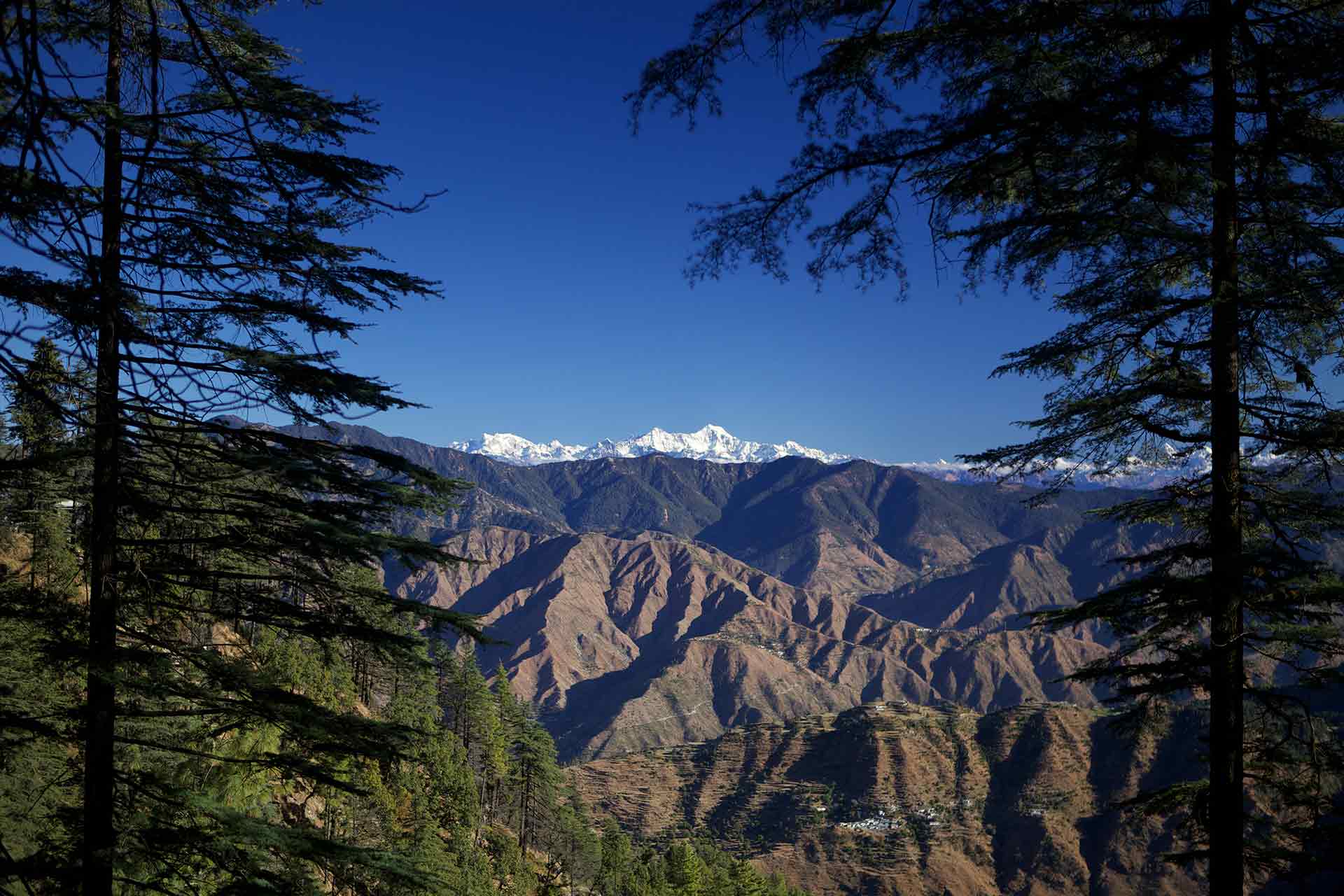
Scenic bends and stunning views of the majestic Himalayas make driving around Landour a rewarding experience. From some of the first buildings of Mussoorie located at Clouds End, Tibetan settlements of Happy Valley or longer drives to charming villages, follow the mountain roads to where they take you.
The Corn Village - Experience life in a village that’s in the heart of the Himalayan foothills. Tucked away on the edge of a mountain, fondly named Corn Village because of the unusual method of storing corn. The blue houses are hung with bright sheaths of golden yellow corn from the roofs. This is a stunning sight.
Happy Valley - Get a glimpse of the Tibetan community in Mussoorie. Experience their culture and visit their traditional Thangka paintings gallery.
Dhanaulti - Located 25 km from Mussoorie at an altitude of approximately 2000 meters above sea level, this small village is set amidst thick alpine forests of Deodar, Oak, and Rhododendron. The drive is exhilarating and one can feel a change in the air as the road snakes away from the hustle and bustle of Mussoorie. As the drive progresses the scenery changes from thickly wooded Oak forests giving way to majestic Alpine forests with a sprinkling of Rhododendron trees. The landscape is captivating as one can get a view of the snow-capped Himalayan ranges to the left, with a contrasting view of the Doon Valley to the right.
Surkunda Devi Temple - En route to Dhanaulti is the Surkunda Devi Temple, an ancient temple at an elevation of approximately 3,030 meters (10,000 feet). The temple is dedicated to Sati, Lord Shankar’s consort. After leaving Mussoorie drive out for about 10 km, this will bring you to the foot of the hill where the temple is situated. After this it’s an easy 2 km trek up hill. Once atop the Surkhunda Devi summit, one has a breath-taking 360-degree view of the Doon Valley and the eternal snows of the Himalayas.
Kanatal - Is a small village that is 30 km from Mussoorie and 10 km beyond Dhanaulti. A less frequented destination, Kanatal greets the occasional visitor with crisp and fresh mountain breezes. Located at a height of 8,500 ft. the small village gets a heavy snowfall during winter and is refreshingly cool even in peak summer.
Park Estate / Everest House - Park Estate, or Everest House, is where one can find the remnants of the residence and laboratory of Sir George Everest, who was the Surveyor-General of India from 1830 to 1843, and after whom the world’s highest peak, Mt. Everest is named. From Gandhi Chowk/Library Bazaar it’s an 8 km drive. Although the road is quite rough beyond Hathipaon, Everest House provides a fantastic view of the Doon Valley on one side and a panoramic view of the Aglar River Valley and the Himalayas on the other.
Clouds End Hotel - Built by a British major in 1838, Clouds End is one of the first four original buildings in Mussoorie. The drive to Clouds End winds through Rhododendron and Oak Forests and terminates at the hotel that’s surrounded by Deodars. At the destination one gets a feeling of peace and tranquillity.
Yamuna Bridge - The 27 km drive down to Yamuna Bridge via the Kempty Falls offers a scenic view of the Himalayan range. It is an ideal spot for some lazy fishing (fishing permits required).
Adventures around Mussoorie
For those who’d like to wander off the beaten track and experience the beauty of nature. Listed below are some adventure treks that can be organized with our team at Reception.
Tungnath and Chandrashila Peak - (Duration: 2 nights, 3 days) – Throughout the course of this hike one can enjoy views of the majestic peaks of Panchchuli, Nanda Devi, Nilkanth, and Kedarnath. The trek takes you through a combination of dense forests and occasional open pastures. The Alpine meadows, known as `Bugyals’ in the local language, are a feast for the eyes. It’s as though the high ranges are within touching distance. After trekking through this wonderland, the ancient temple of Tungnath comes into view. Tungnath is situated at an altitude of 3,680 meters and said to be over 2000 years old.
Har-ki-Doon - –(Duration: 4 nights, 5 days) – Har ki Doon is situated in the western ranges of the Garhwal Himalayas. At an elevation of 3,566 meters, dense pine forests surround this cradle shaped valley. The forests are rich in wildlife and are a paradise for nature lovers and bird-watchers. On the first stretch, the trek from Netwar to Osla takes one through dense forests of Chestnut, Walnut, Willow, and Chinar. In direct contrast the trek from Osla to Har ki Doon traverses terraced fields, coniferous forests, and lush green pastures. As Har ki Doon is located within a wildlife sanctuary, one may be lucky enough to spot a deer or even a bear. There is also a beautifully carved temple dedicated to Duryodhana, the Kaurava Prince.
Khatling Glacier - –(Duration: 4 nights – 5 days) – The Khatling Glacier is situated in the Tehri district and is the source of river Bhilangna. The glacier is surrounded by snow peaks of the Jogin group (6466 m), Sphetic Pristwar (6905 m), Barte Kauter (6579 m), Kirti Stambh (6902 m) and Meru. The trek starts from Ghuttu, a small village. One has to trek about 45 kms and pass through remote villages with thick kharsao forests and wide –open, grassy meadows. The entry to the Bhilangna valley provides excellent spots for camping.
Nag Tibba - (Duration: 2 nights-3 days) – Nag Tibba, situated to the northeast of the Doon Valley, at an elevation of 10,000 ft, is the highest peak in the area, surpassed only by the altitudes at which Har-ki-Doon, Yamunotri and Gangotri are situated. Nag Tibba gets its name from a very old temple of Nag Devta (the Snake God) situated at the summit of the mountain.The locals call this place Devta. One can get a stunning view of the Bandarpoonch peak, the Gangotri group of peaks, the Kedarnath peak in the north, to name a few, and Mussoorie in the south.
Himalayan Village Life - (Duration: 8 hours) – Take a walk to a typical small village of Uttarakhand. Khandajhak is located across the valley and a scenic day trek across the Aglar River. Consisting of about 50 families, the villagers are extremely hospitable and live a simple life of subsistence farming. A visit to one of their homes for lunch or tea can be arranged.



